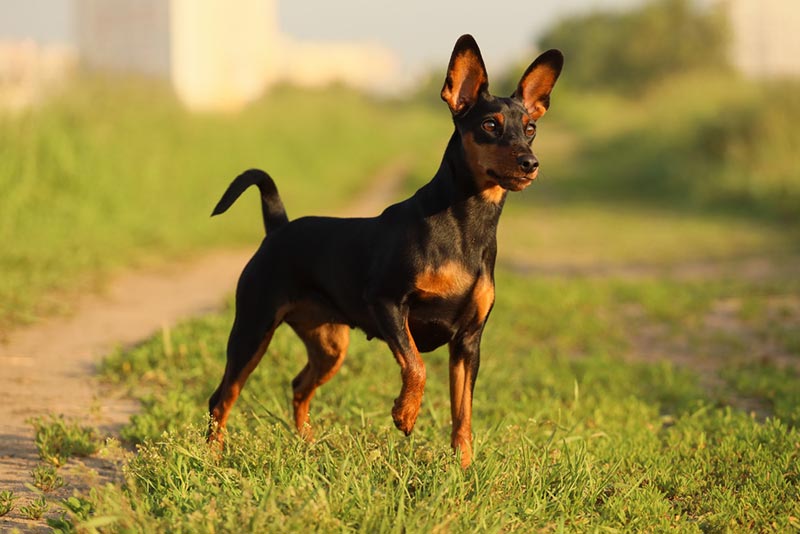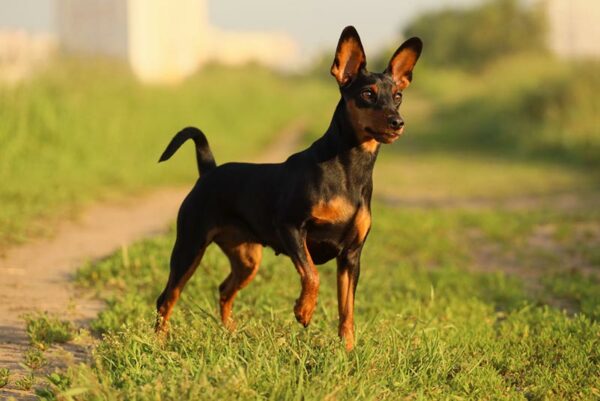Click Below to Skip Ahead
If you’ve ever thought you’d like to have a Doberman but didn’t want to deal with their size, a Miniature Pinscher might be just what you’re looking for! They’re not Dobermans, but they certainly look a lot like a miniature version of one, considering they only weigh up to 10 pounds! Let’s dive into the details and teach you everything there is to know about this adorable breed.
Breed Overview
Height:
10–12.5 inches
Weight:
8–10 pounds
Lifespan:
12–16 years
Colors:
Solid red, stag red, blue stag red, chocolate stag red, fawn stag red, black, grey, chocolate, blue, or fawn
Suitable for:
Families, experienced pet owners, those living in apartments or smaller homes
Temperament:
Loving, loyal, active, vocal, and sometimes stubborn
If you’re looking for a fun-loving small dog that acts like they’re the biggest thing around, a Miniature Pinscher might be just what you’re looking for. They look just like miniature Dobermans, but despite the similarity in appearance, they’re two completely different breeds.
They’re the perfect small dog if you want a pup with a big personality but have limited space, so it’s really not hard to see why so many people love them.
Miniature Pinscher Characteristics

Miniature Pinscher Puppies
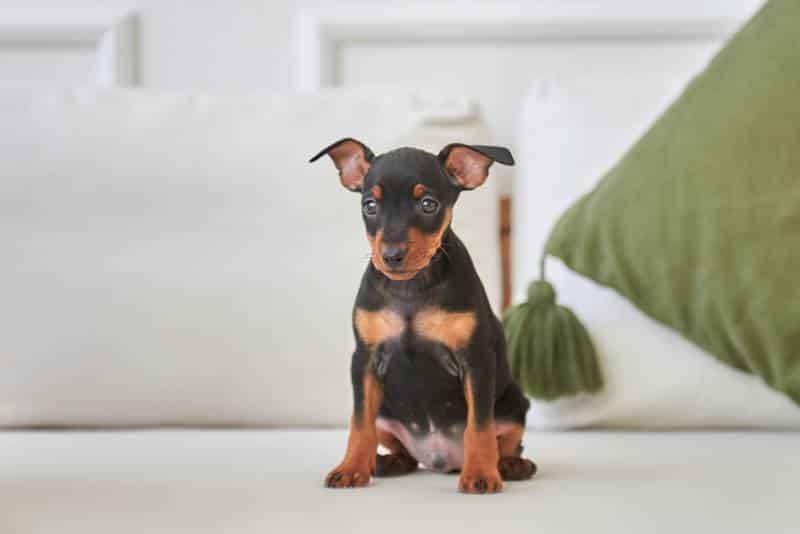
Miniature Pinschers aren’t the most popular dog breed in the United States, but they’re not the rarest either. You’re probably not going to find them in shelters though, so if you want one you’ll need to find a reputable breeder.
Do your research when finding a breeder to ensure you’re not accidentally supporting a puppy mill, and don’t forget to get references and a health check from the breeder. While it might take a bit more work to find a reputable breeder, it’s more than worth it knowing that you’re supporting someone who cares about the health of the breed and that you won’t have as many health issues to deal with in the future.
Temperament & Intelligence of the Miniature Pinscher
The Miniature Pinscher is tiny, but they have big personalities that shine through in just about any situation. They’re small dogs that feel like they’re the biggest dog in the room, which plays a major role in their everyday lives.
They can also have a pretty serious stubborn streak, but with proper training, they’re extremely loving and eager to please. But while they’re stubborn, they’re also incredibly smart, so if you’re willing to train them, you can get them to do all sorts of fun tricks.
Are These Dogs Good for Families? 👪
With proper socialization, Miniature Pinschers can make amazing family dogs. They can be a bit nippy with smaller kids if you don’t socialize and train them early on, but an experienced pet owner can nip this in the bud before it becomes a problem. Still, you’ll want to have a meet-and-greet between the puppy and your kids before you commit to bringing one home.
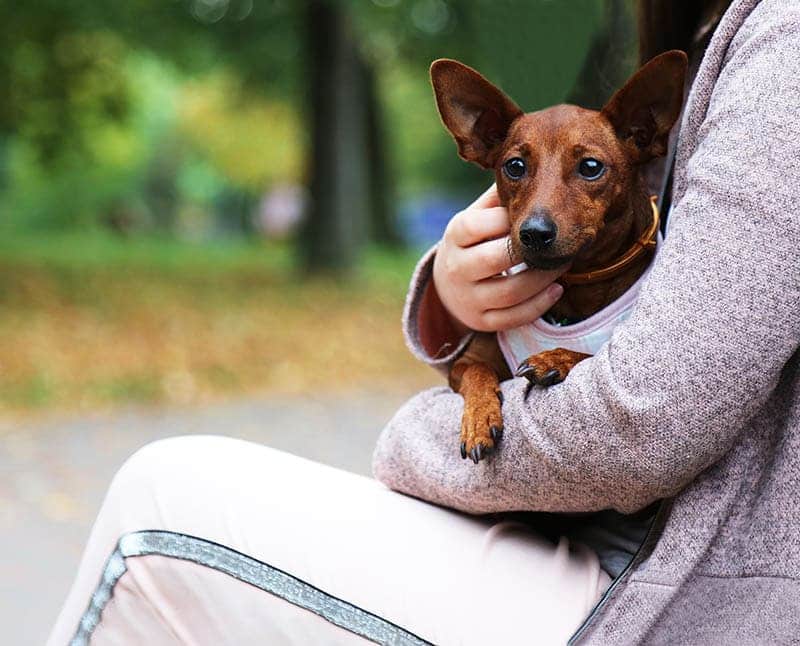
Does This Breed Get Along With Other Pets? 🐶 😽
Miniature Pinschers do their best to get along with other dogs in your home, but because of their natural instincts to dig up and kill rodents, it’s not the best idea to keep them around smaller pets like hamsters and guinea pigs.
Keep in mind that while the Miniature Pinscher is small, they feel like they’re big. Because of this, they aren’t as careful as they should be around larger dogs, which can quickly lead to injuries if the larger dog isn’t careful.
Things to Know When Owning a Miniature Pinscher
While owning a Miniature Pinscher is much like owning just about any other dog breed, you’ll still want to know exactly what you’re getting yourself into before you bring one home. With that in mind, we’ve highlighted some of the basic care requirements for you just below.
Food & Diet Requirements 🦴
Miniature Pinschers are extremely small dogs, and because of this, they don’t eat much. Because of their smaller size, they need between ½ and 1 cup of high-quality kibble each day. It’s up to you to pick between dry, wet, or fresh food, but ensure you buy high-quality food. It might cost a bit more now, but it will make them feel better, stay healthy for longer, and save you money on vet bills in the long run.
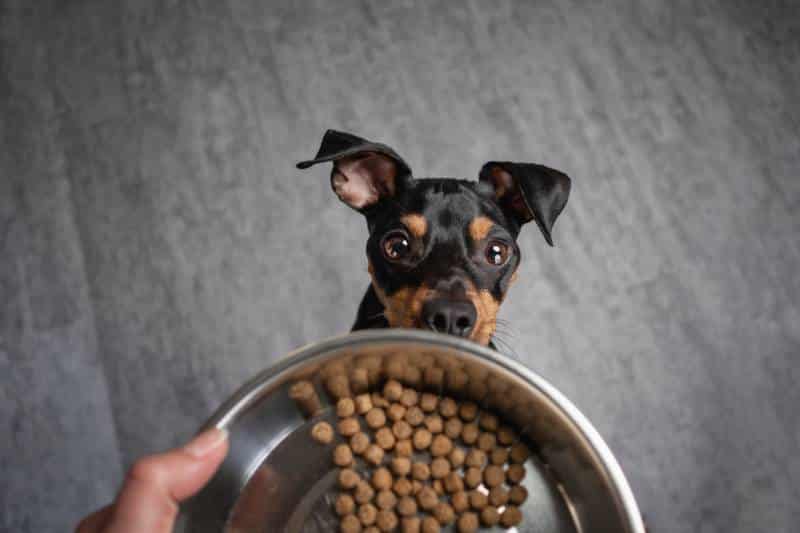
Exercise 🐕
Miniature Pinschers might be small, but they’re tiny little balls of energy. They always want to be on the move, and if you’re not meeting their exercise and mental stimulation needs, they’ll quickly venture into destructive boredom behaviors.
Aim for at least two walks daily, with each walk lasting between 15 and 20 minutes. From there, try to play with them in your home to keep them moving. A fenced-in yard is ideal, but because of their smaller size, it is possible to meet their exercise needs indoors as well.
Training 🎾
Miniature Pinschers are smart dogs that you can train to complete a wide range of tasks, but they also can be incredibly stubborn. They don’t mind engaging in a battle of wills, and if you’re not willing to stick it out, your Miniature Pinscher can end up running your home.
Stick with one or two training sessions daily, with each session lasting between 10 and 15 minutes. Use positive reinforcement and encourage them to stay focused because if you do end up in a battle of wills, it won’t be enjoyable for you or your pup!
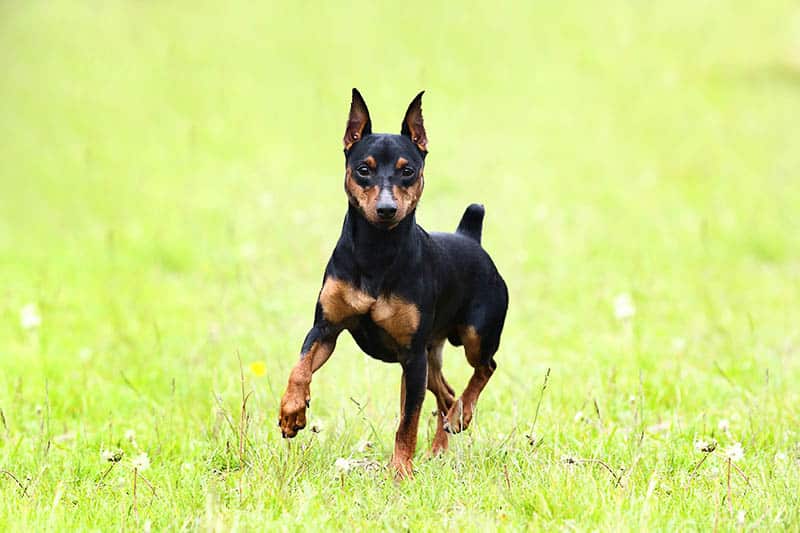
Grooming ✂️
Miniature Pinschers have shorter coats, and while this might make you think they don’t shed at all, that’s not the case. They’re moderate shedders and do best if you brush them out two to three times a week. This will help control the amount they shed all over your home.
You’ll also need to brush your teeth each day to keep up with oral hygiene. They should get a bath every few months, and you’ll need to clip their nails as needed.
Health and Conditions 🏥
- Patellar luxation
- Eye problems
- Legg-Calve-Perthes disease
- Epilepsy
- Heart defects
- Thyroid issues
Male vs. Female
There generally isn’t much of a difference between male and female Miniature Pinschers, although males tend to be a little larger than females. But for dogs that max out at 12.5 inches and 10 pounds, they’re never going to get very big. In fact, if you’re looking at them side by side, you’ll likely never even notice a difference!
3 Little-Known Facts About the Miniature Pinscher
1. They’re Not Mini Dobermans
We get it, they look just like a miniature Doberman. But while they have several similar physical characteristics, they’re not a scaled-down version of one. They’re their own breed with their own history that has nothing to do with the Doberman.
2. They Get Their Name From Their Hunting Prowess
When you look at a Miniature Pinscher, you probably don’t think of a hunting dog, but that’s what people originally bred them for. They’re incredible ratters, and that’s where they get the “Pinscher” part of their name.
3. It Took a While for Global Recognition
The American Kennel Club (AKC) recognized the Miniature Pinscher in 1925, and it wasn’t until about 1900 that people outside of Germany and Scandinavia even knew about these pups. That might seem like a long time, but considering that these pups have been around for hundreds of years, it really took a while for people to start noticing them!
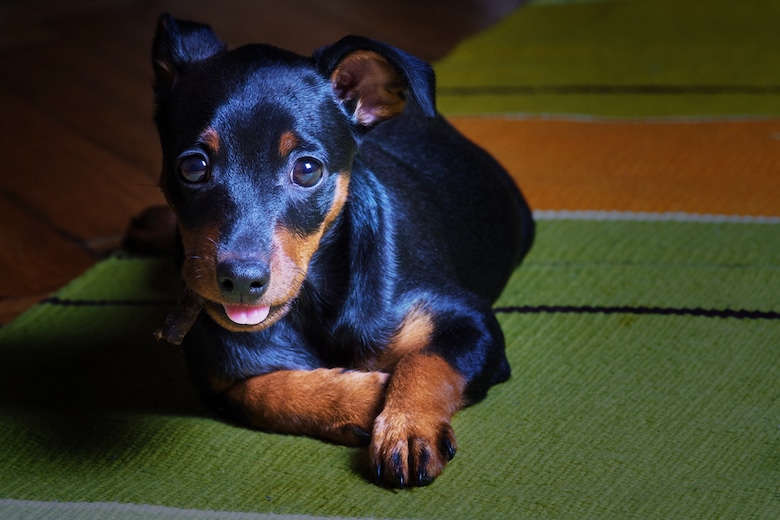

Final Thoughts
Whether you’re looking for a new pup or just want to learn a little more about what’s out there, the Miniature Pinscher is sure to catch your eye. They’re fun-loving, cute, and have amazing personalities, so once you bring one home, we’re sure you’ll fall in love.
They might be a bit of a challenge at first, but their quirky spirit and loving attitude toward life make them more than worth it.
Featured Image Credit: Sevostyanova Tatyana, Shutterstock

